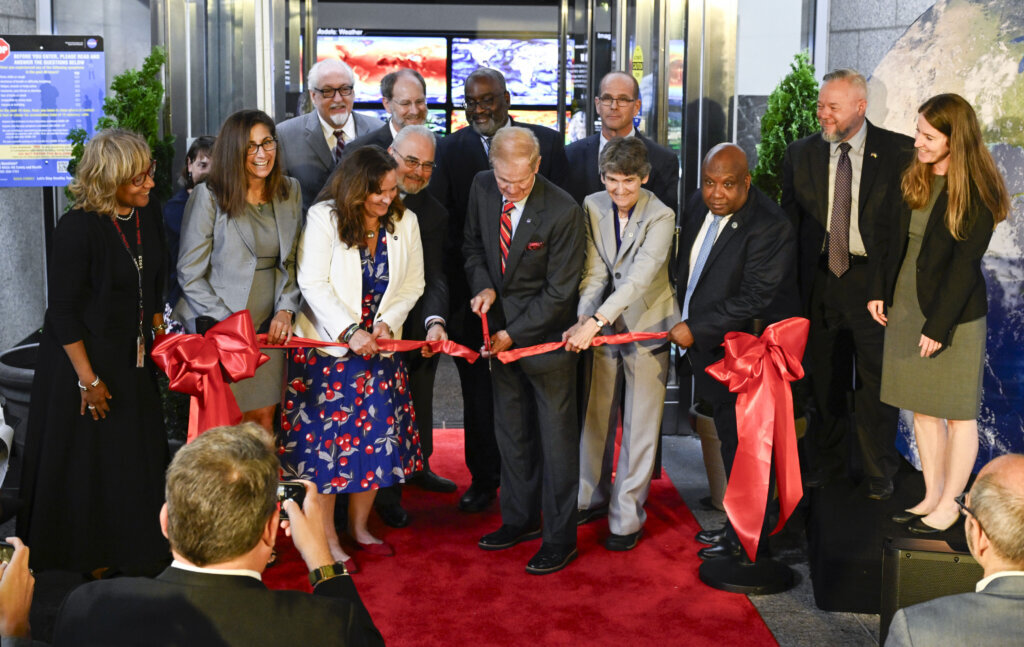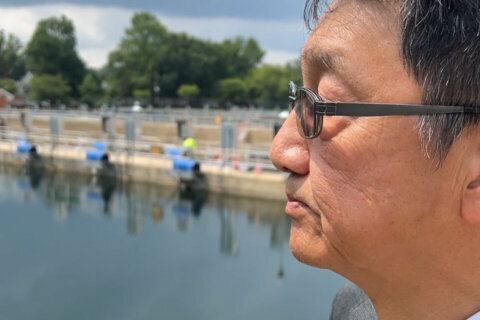
Earth’s vital signs, including global temperature, sea levels and air quality, are monitored daily by NASA, and now the space agency is sharing what it knows with the public.
NASA has opened the doors to its new Earth Information Center — a free interactive exhibit — in the lobby of its headquarters in Southwest D.C.
The center features a climate dashboard, fueled by real-time data from Earth-monitoring satellites, showing measurements of carbon dioxide in the atmosphere and the extent of Arctic sea ice. The exhibit also includes an immersive experience.
“Someone can walk into a room and they are suddenly in space, looking down at the Earth and then looking at the horizon of the Earth and see the little film — very thin film that is the atmosphere that sustains all of our life,” said NASA administrator Bill Nelson.
Nelson flew on Space Shuttle Columbia in 1986, just weeks before the Challenger accident killed a crew of seven.
“Or in another part, we have what looks like a beautiful lit-up chandelier that is pulsating, and it’s all the information coming from specific satellites, how that information is pulsing to Earth,” he said.
Nelson said he was blessed to have the privilege to look down at Earth from the window of a spacecraft.
“There’s something that happens to you when you see that. I just very truthfully became more of an environmentalist, by virtue of what I saw,” Nelson said.
Nelson described what he saw from the altitude he reached as the spacecraft orbited the Earth every 90 minutes.
“I could see the destruction of the rainforest in the upper Amazon region. I could look to the east, in the same window of the spacecraft, and I could see the silt that discolored the waters of the Atlantic for hundreds of miles as a result of the destruction of trees upriver going across Madagascar,” Nelson said.
Nelson foresees numerous ways people can use the information provided by satellites in space to improve their lives on Earth, ranging from farmers who’ll benefit from data on the moisture content of their soil to homebuyers who can assess the risk of flooding on property they’re considering buying.
There is also a corresponding Earth Observation Center website. Both the physical exhibit on E Street and the website share the goal of providing everybody usable Earth information.








